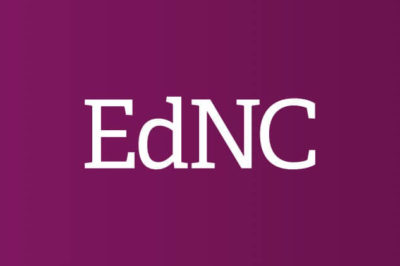

This op-ed was originally published on February 6, 2015 in the News & Observer.
The North Carolina Department of Public Instruction and the State Board of Education recently released the first school letter grade system in our state, which uses an “A” through “F” scoring designation based on student proficiency and growth. The model for school grades has been adopted across many states and each use diverse methods for calculating their letter grades. Most models rely upon formulas that are heavily based on student academic achievement data.
I was a school administrator in Florida in 1999, and I remember well when this system was first adopted there. When the scores were first released, teachers, the public, the media and ultimately the parents expressed a wide array of emotions, but assigning school grades, whether you agreed with the policy or not, was a process that forced greater dialogue about effective and high quality schools for students. North Carolina’s letter grade system will likely trigger a similar reaction to what I lived through in Florida, where there will be some initial shock waves of concern, followed by a gradual transition into dialogue about what should be done to help improve schools for the benefit of all students.
Though the school letter grade policy discussion is still taking shape in North Carolina, there have been some common characteristics identified across states, as well as schools here in our home state. One of the most common trends noted is the direct connection between student poverty rates and those schools often receiving the “D” or “F” label. A Southern Education Foundation report shows a majority of our students now live in low income homes nationwide. North Carolina out-paces the nation by 2% with more than 53% of our students living in low income homes. The letter grades assigned to public schools across North Carolina, where almost 30% are designated with a “D” or “F,” show a clear correlation between poverty and student proficiency and growth. In fact, 100% of the “F” schools have more than 50% of their students eligible for free or reduced lunch.
We know that poverty is not an impediment to learning; however other factors related to poverty can serve as roadblocks to long-term achievement. Mitigating poverty related barriers for students will require a comprehensive approach that includes a focus on removing both academic and non-academic barriers to student success. A promising practice called Integrated Student Supports, a system of wrap around services and supports, shows that professionals working in schools to coordinate and deliver targeted services to identified students are increasing student and school outcomes. By addressing factors known to predict student achievement such as increased attendance, behavior and conduct modification and meeting basic needs, these professionals are supporting schools and teachers while, at the same time, addressing life-related circumstances that distract students from fully engaging in learning.
By using proven practices like Integrated Student Supports, North Carolina has an amazing opportunity to be a national leader in adopting a comprehensive approach focused on driving student achievement. This approach diminishes those factors that contribute to generational poverty and often result in students dropping out of school. Communities In Schools of North Carolina (CISNC) and the statewide network of CIS affiliates together comprise one of the nation’s largest providers of Integrated Student Supports. By mobilizing local communities and leveraging resources into schools to provide Integrated Student Supports, CISNC is increasing attendance, improving behavior, and growing student promotion and graduation rates.
The conversation about what it means to have effective and high quality schools for students in North Carolina will continue to evolve. I hope that this dialogue will focus on models that support great teachers and school leaders, while also embracing proven interventions that help to enhance student outcomes like Integrated Student Supports. Research confirms that Integrated Student Supports remove barriers that would typically diminish students’ potential for graduating prepared for post-secondary education and/or a career. Integrated Student Supports must be included as an integral component in a comprehensive process designed to accelerate student success.
As we reflect upon the grades of the schools across North Carolina, I encourage all of us to learn more about our schools, the resources that are in place to close gaps for students and how we as a community can contribute to the solution. By working together, we can change the picture of education across North Carolina.




